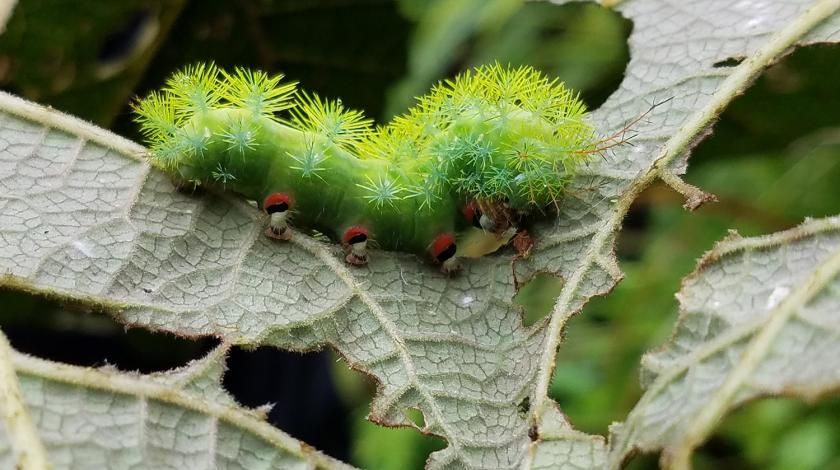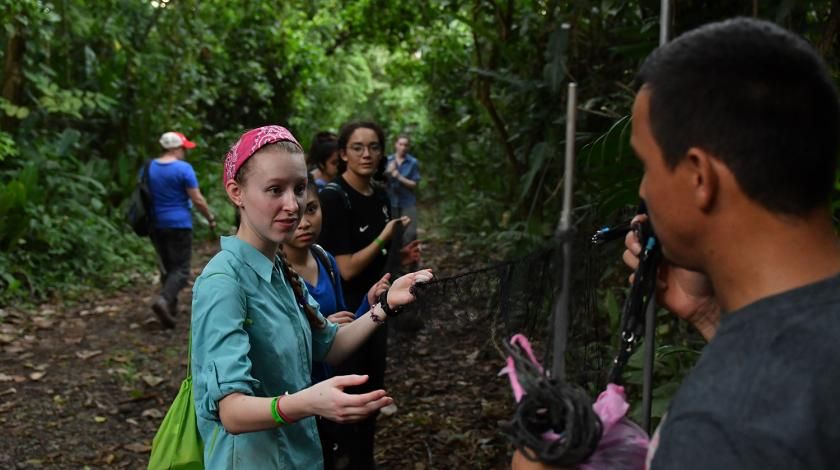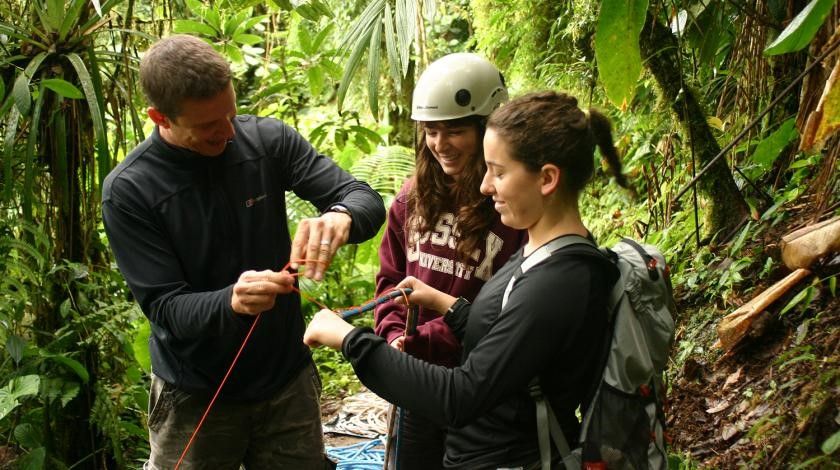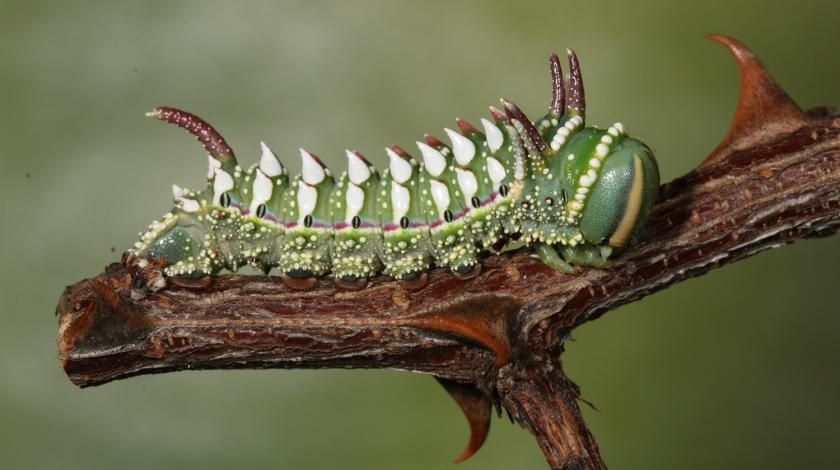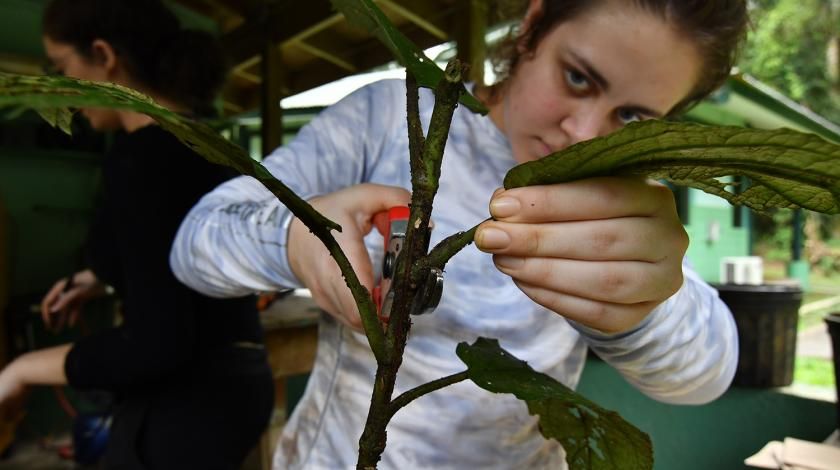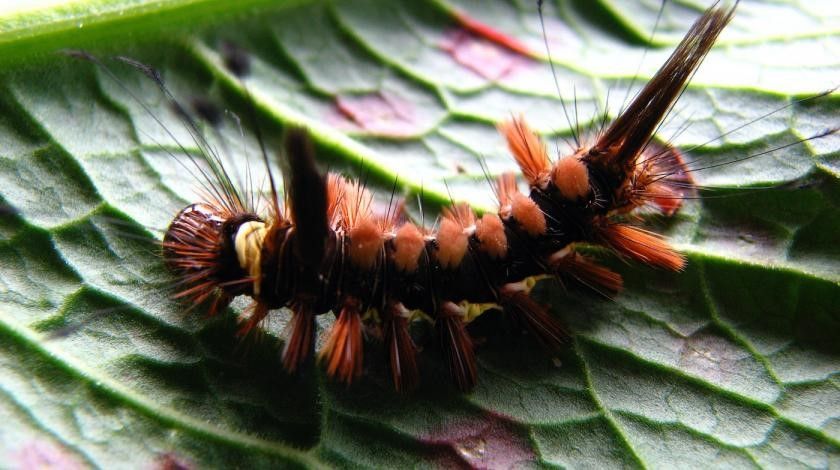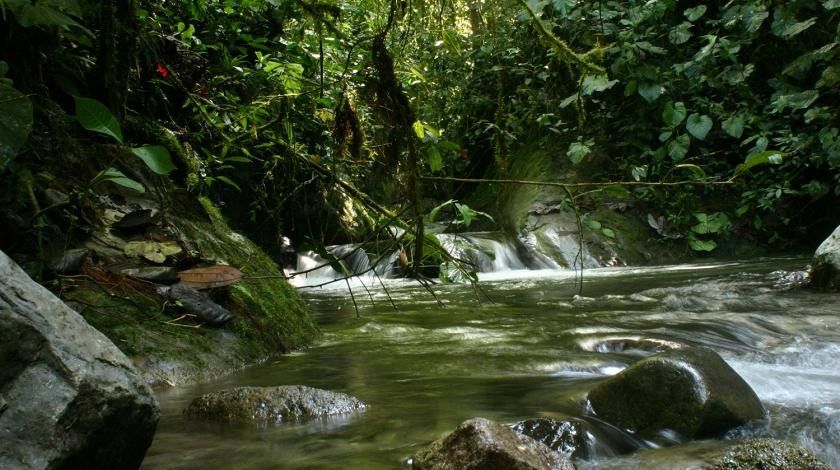Climate Change and Caterpillars
Help scientists untangle the complex relationships between caterpillars, the plants they eat, the parasitoids that eat them, and the changes in climate that will reshape the rainforest.
On this Earthwatch Expedition, you’ll be dazzled by the array of shapes and colors that caterpillars come in, most of which serve as natural defenses against their predators. Some of these defend against wasps and flies, called parasitoids, which kill the caterpillars by laying eggs in or on them (this gives their offspring a safe, food-rich place to grow).
Caterpillars and parasitoids live in a delicate and dynamic balance, one that climate change could destroy. This research has shown that warmer temperatures speed up caterpillar growth, meaning parasitoids can’t use them as hosts because their life cycles are out of sync. As a result, the parasitoids die off. With fewer parasitoids to keep them in check, caterpillars breed unchecked. Some caterpillars can eat up to 27,000 times their body weight in just a few weeks, so if they become too plentiful, they can quickly wipe out their host plants.
You’ll trek off trail to scour the forest for these small but spectacular creatures. The specimens you collect will be chemically analyzed and observed in a lab on-site, and will contribute to the data scientists have collected on over 9,500 species of both caterpillars and parasitoids. You will help preserve the complex, wondrous variety of plant and animal life within rainforests in either Costa Rica or Ecuador, while working with some surprisingly fascinating creatures. You may even find a new species—it’s happened before.
For more information or to book contact our office (03) 9016 7590 or email
Estella Egar | MARCH 18, 2019 ★★★★★
"Inspiring"
Our very spacious and comfortable quarters were on the second floor of the palace on a large old farm and winery called Casa Cadaval! My room with large bath was nicely furnished and the bed with duvet was wonderfully comfortable. We had a well stocked kitchen down the hall and an airy breezeway dining area for our breakfasts and lunches. While eating we watched a pair of storks that had a nest on a nearby chimney. The countess and her wine taster held a very nice wine tasting for us one afternoon! Each morning we drove past the vineyards and a horse pasture to our dig site in a cork oak grove only 10 minutes away. The site was an ancient shellmidden - a mound made up almost entirely of crushed seahells of many kinds, fire-cracked rock, charcoal, fish bone and animal bone, together with some quartz or chert flakes or possible tools.. We excavated small units and when we had a full bucket would screen it for the small ltems. The fire-cracked rock and all larger items were recorded in place using a total station laser, and bagged individually. We found several fairly large pieces of bone and my best finds were a complete horse tooth and a red deer antler. The weather was hot and dry, but the dig site was shaded by a canopy and we did our screening under a large cork oak tree, so generally it was quite pleasant work. The archaeologists Joao. Celia and Lino with graduate assistants Elena and Roxanne were all great to work with! They were always cheerful and helpful, and provided everything we needed to do the work efficiently. Because of the heat we left for the site at 7:30 AM and returned around 12:30 or 1:00 for a two hour lunch and rest before washing and sorting the artifacts and helping with other lab work. Dinner at 7:30 PM was quite an event! We usually ate at an excellent local restaurant specializing in fresh seafood, with shrimp, mussel and other seafood appetizers, very generous meals, local wine and a great selection of desserts! I have been on over 100 Earthwatch expeditions and have never been treated better than on this one! The work was fascinating, the countryside was beautiful and the people were wonderful I definitely rate it as one of my all-time favorites!
Laura Quick | JANUARY 17, 2017 ★★★★★
"Climate & Costa Rican Caterpillars - PI/Research, Team and Location - win, win, win!"
Growing up in California, I thought it was good that I knew a half dozen caterpillar species and their subsequent butterflies. Later, I ran an animal blog and learned about weird-ass caterpillars around the globe and the creepy parasitoid wasps/flies that prey on them. I knew how the cycle worked. Plus, the project is in Costa Rica, right? How lucky is that? Lucky indeed! The project was a terrific learning experience and the La Selva Biological Research Station did not disappoint, offering a hotbed of spectacular animal sightings. Lee Dwyer has been working with caterpillars for a couple of decades now and focusing on both the diversity and the connections as well as the interaction relationships between species, food, and predators; then determining how those relationships are affected by shifts in climate. Lee has the ability to bring his research alive, and to engage you in meeting current project goals. He's been working with Earthwatch volunteers for a couple of decades and you can see why, he's terrific with newbies, patient. focused, flexible, and encouraging, without being pushy. The project is hands on, which I loved. You're out collecting caterpillars (the current study species are TINY compared to the scary 5" babies I was envisioning), or in the lab caring for the growing zoo of specimens collected (including fascinating caterpillars big & small), data entry, running herbivary studies on test plot leaves, moving clone seedlings. We had a wonderful, cohesive team.
-
 Activity Level: Very Easy
Activity Level: Very Easy -
 Location: La Selva Biological Station, Costa Rica or Yanayacu Biological Station, Ecuador, South America
Location: La Selva Biological Station, Costa Rica or Yanayacu Biological Station, Ecuador, South America -
 Lead Scientist:
Lead Scientist:


